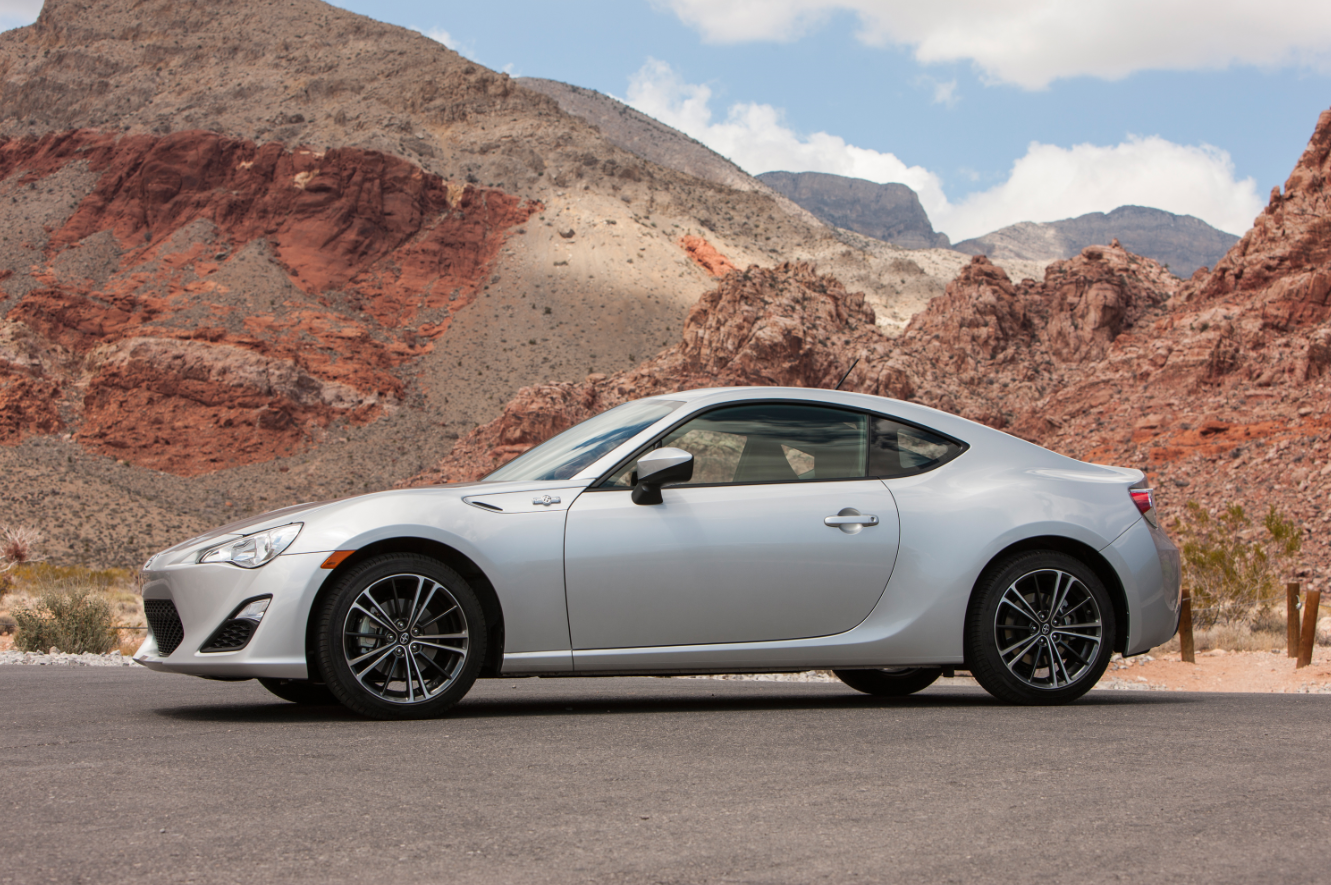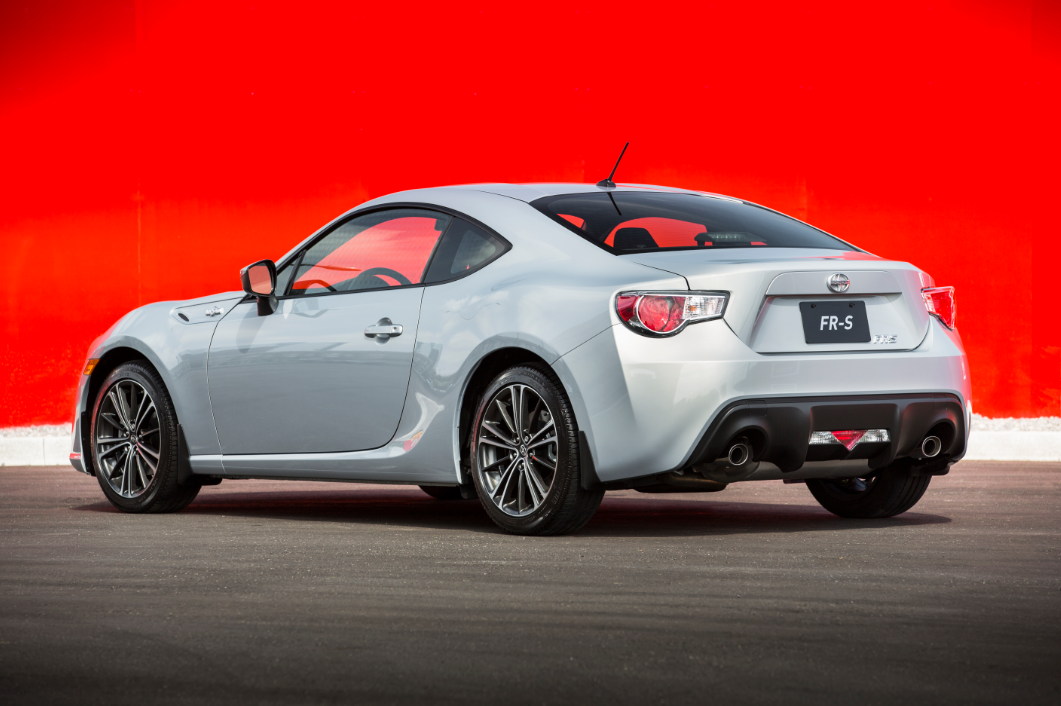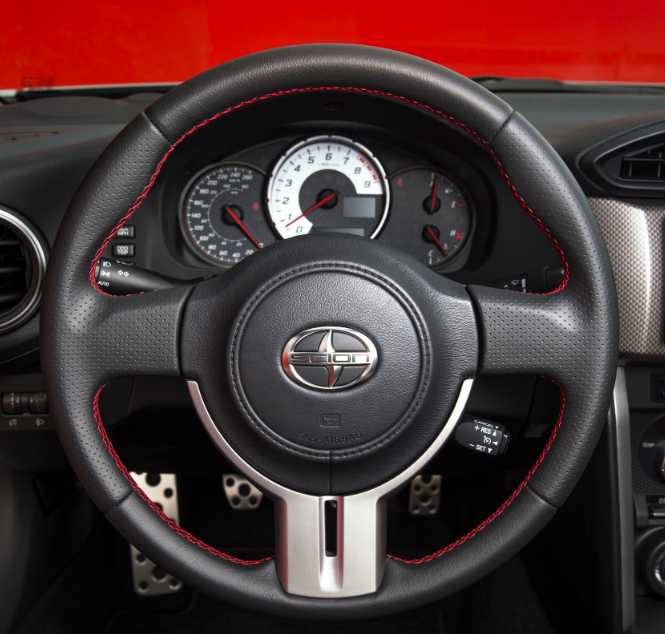2014 Scion FR-S – What We Like and Dislike
- Written by Rishi Rajan
- Published in CAR REVIEWS
- font size decrease font size increase font size
- Be the first to comment!

Gone are the days where almost every car manufacturer had an affordable two-door sports car. The last few decades had some amazing specimen – including Acura’s Integra and Prelude, Mazda’s RX-7, and Nissan’s 240SX. Sure, some makers like Ford and Mitsubishi could sustain their coupes, while others would wait a decade or two to reintroduce the likes of the Camaro, the Challenger, and the FT-86.
While some may have not heard of the FT-86, it’s a Toyota product introduced in North America as the Scion FR-S. Well, to be more specific, it is a joint project by Subaru and Toyota to bring a robust sports sedan to North America. The Subaru version, known as the BRZ, is an exact replica of the FR-S. Both Subaru and Toyota admit that the former was responsible for the chassis and powertrain and the latter was responsible for the design.
LIKES
Brisk performance
How do you make a Toyota sports car feel nothing like a Toyota? You have it engineered by your competition. The FR-S is very light and nimble, thanks to its small dimensions. Power is driven from the front mounted engine to the rear wheels, and acceleration is almost instantaneous. The 2.0L engine generates about 200 horsepower and is powerful enough to push the car from a standstill to 100 km/h in 6.2 seconds in a manual and 7.9 seconds in an automatic. Torque is a bit lacking at only 151 lb-ft., compared to the Hyundai Genesis coupe’s 223 lb-ft. rating. Regardless, the Subaru-built Boxer engine makes the car feel quite powerful.
Sleek profile
This FR-S sits quite low to the ground – even more so than its Toyota-branded predecessor, the Celica. The low profile and standard 17-inch wheels make the car look wider than it actually is. The lower body is wrapped in an edgy body kit that gives the car an even sportier appearance. The headlights and taillights are small, and don’t have any LED elements within them – which is slightly disappointing for a car in this segment. The roof features two curvy accents that improve the styling and aerodynamics, and is only noticeable when you stand right beside the car.

DISLIKES
Disappointing Interiors
The interiors are severely lacking both in design and technology. The dash is laden in a faux carbon fibre pattern draped over hard plastics. The air conditioning knobs feel like they’ve been pulled out of a toaster oven. The gauges look decent with a crisp racing font used against a contrasting black or white background. Unfortunately, the digital multi-information gauge within it is terribly simplistic, and offers only a single piece of information at a time – be it the speed, fuel economy, or trip meter reading. The steering wheel has a nice pattern and although the steering is electric, it feels slightly stiff for a car of this size. It would be nice if the steering stiffness could be adjusted – especially for long drives.

Unusual jolts
On the automatic transmission at least, the car seems to jolt forward or backward slightly when shifting from Park (into either Drive or Reverse) and taking your foot off the brake. In most cars, when you shift into either gears, the car moves forward or backward gradually as you take your foot off the brake. On the FR-S, taking your foot off the brake after the shift pushes the speed to 5 km/h almost instantly. While this may not sound like a big deal, it could be a bit dangerous if you are in a parking spot and there is a car either in front or behind you. This issue can easily be averted by letting go of the brake pedal gradually, but it would take some getting used to.
